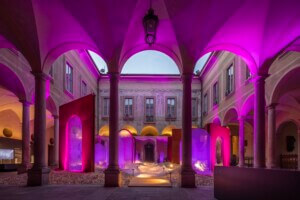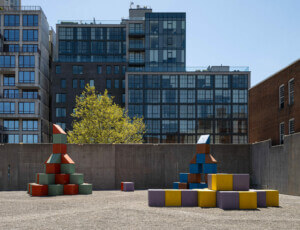Since 2022, the historic site of Woodstock in Bethel, New York (yes, that Woodstock) has invited architecture students to build fantastical follies near the vast meadow where icons like Hendrix, Joplin, and Baez famously shredded in 1969. In lieu with the site’s experimental history, the Bethel Woods Art and Architecture Festival, now in its second iteration, provides emerging architects a platform to execute design-build projects that introduces them to the joys and challenges of operating at a 1:1 scale.
This year’s Art & Architecture Festival at Bethel Woods Center for the Arts theme was Take the Groovy Way which yielded seven projects dispersed across Bindy Bazaar Woods in the historic Groovy Way trail, the fair grounds’ entrance. Between September 13–17, over 75 participants came from Kean University, University of Kentrucky, Fashion Institute of Technology, Rochester Institute of Technology, Syracuse University, Cornell University, Illinois Institute of Technology, and Texas Tech University for installations, lectures, and live musical performances.
“We are excited that this year’s installations will create opportunities for engagement with the trail and throughout the Bindy Bazaar woods,” said Dr. Neal Hitch, senior curator of the Museum at Bethel Woods. “Each piece will align with concepts of ‘entry,’ ‘journey,’ and ‘procession,’ calling on visitors to ‘forge their own path’ and to ‘climb the hill in their own way. The work these universities and students are doing will benefit every Bethel Woods visitor for generations to come.”

Veil by students from Kean University, led by professor Stephanie Sang Delgado and Fabio Castellanos, consists of wooden posts weaved together with see-through curtains. The installation is adaptable; its curtains can be reconfigured to create new spatial arrangements between the posts, a response to the brief’s call for creating architecture that allows visitors to “forge their own path” and to “climb the hill in their own way.” Kean students Christopher Cabarcas, Varrianna Siryon, Maria Jose Torres, Carlos Cruz, Emily Benavides, Frank Quagliotti, and Elizabeth Rutalis were each part of the build team.
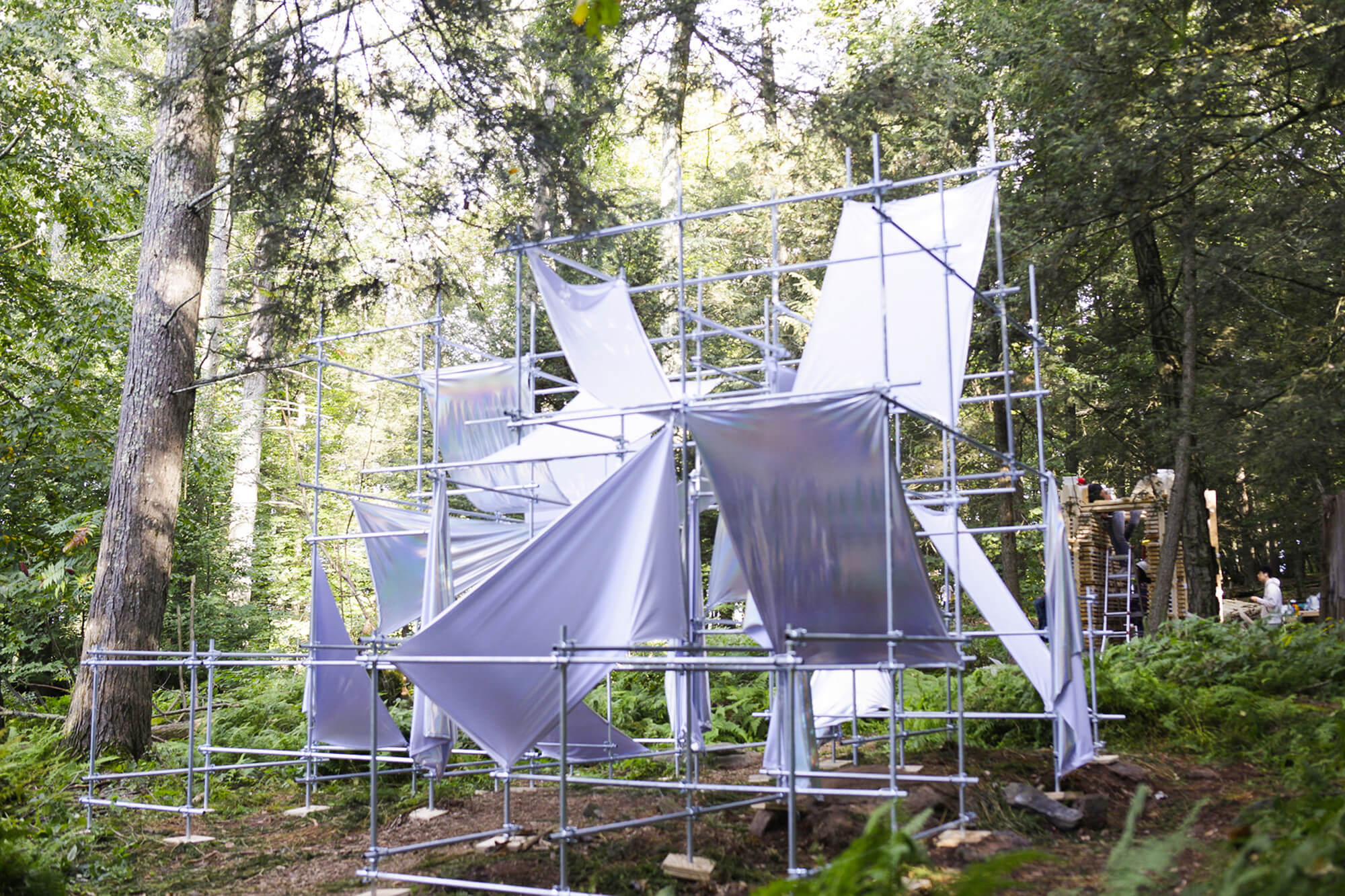
Peace, Love, Shimmer was University of Kentucky’s design-build project. Led by professor Galo Canizares, Kentucky students Taelor Parish-Williams, James Grimm, Lizzy Panic, Mara Morris, Dulce Cortes, and Kay Bailey made a temporary structure out of ready-made, modular, reusable building systems. It uses iridescent fabric as a nod to the psychedelic artwork made during Woodstock ’69. Its modular construction allows for quick assembly and disassembly, also in line with the event’s environmental ethos.

WoodStack was a collaboration between Cornell University and Illinois Institute of Technology students. Professors Dillon Pranger and Christopher Battaglia worked with students Isac Colta, Michael Graham, Emily Duong, Scott Rainen, Raihaan Bose, Weizi Song, Kayla Soler, and Yicheng Yuan on an installation which draws inspiration from lumber yards, providing a second use for materials slated as waste.

Java & Jam is a thin-shell pavilion clad in bio-waste composite materials by Texas Tech University students and professors. Java & Jam’s build team comprised Enrique Espinoza, Mark Segovia, Zoe Wall, Shailyn Beaty, Matthew Coyle, Emily Hammer, Kristen McCullough, Emily Perez, Abigail Petrofes, Kani Willis, Antonio Braz Camargo, Aiden McGorry, Isaac Mendez, Melissa Eagleton, Kiri Channer. It was led by professors Neal Lucas Hitch and Erin Linsey Hunt. Students and their teachers incorporated coffee grounds, sawdust, non-toxic glues, plywood, and white grape pomace sourced locally from upstate New York into the ensemble of computationally generated forms.
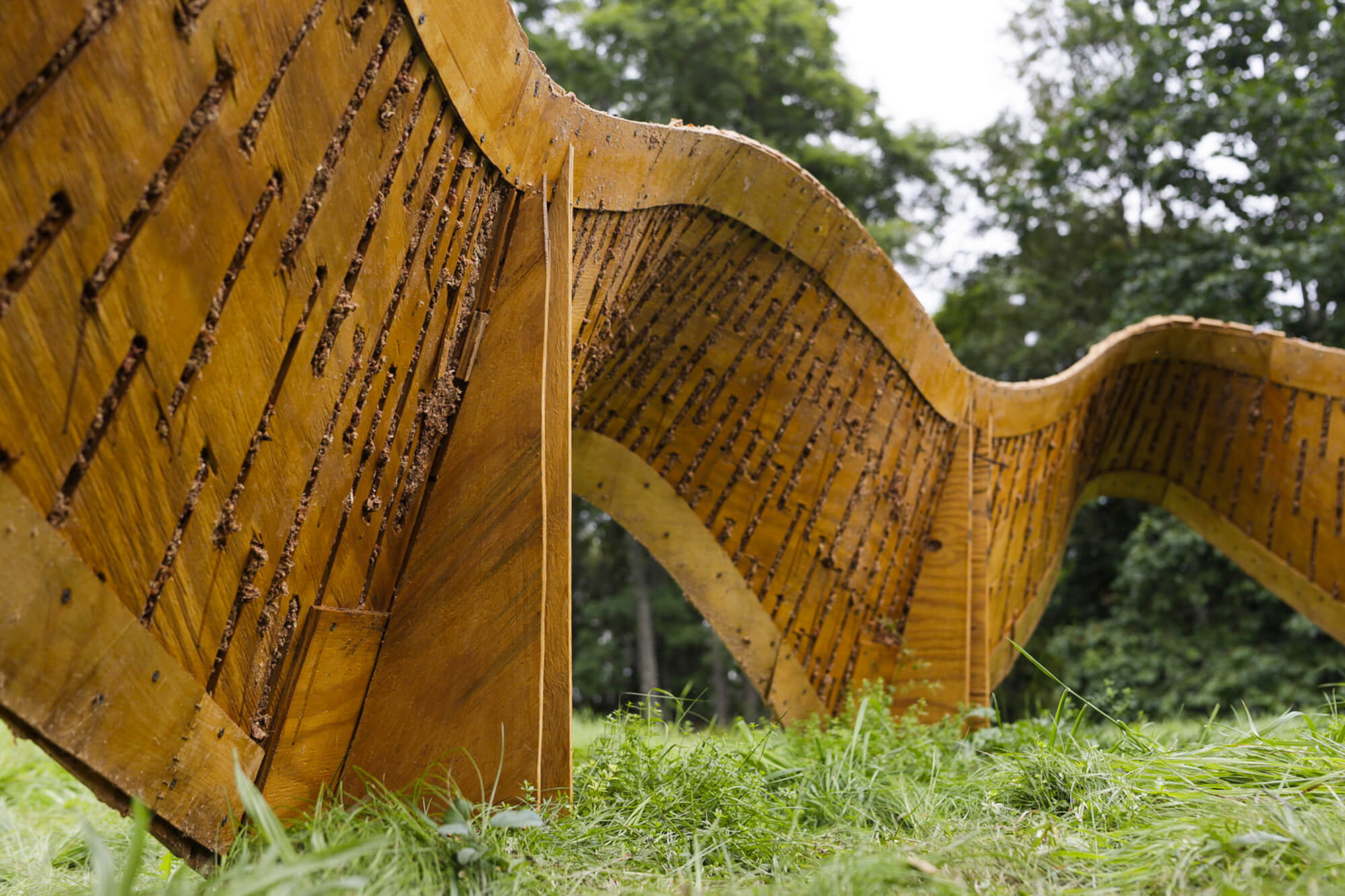
Professors Lara Goulart and Kelly Wilton from Rochester Institute of Technology helped students build Inner Path, a series of interconnected pyramid-shaped modules made of wood. The form is meant to symbolize “symbolizing life’s ups and downs and the numerous possible directions individuals can choose.” Molly Sloane, Michael Patchen, Jeremy Weeden, Hannah Roth, Sui Liu, Andrew Lin, Austin Greifenkamp, Julie Nguyen, Jasmine Khamphanthirath, Julia Kess, Xu Yue Len, Parker Dbiel, and Courtney Lougheed were each part of the build team.
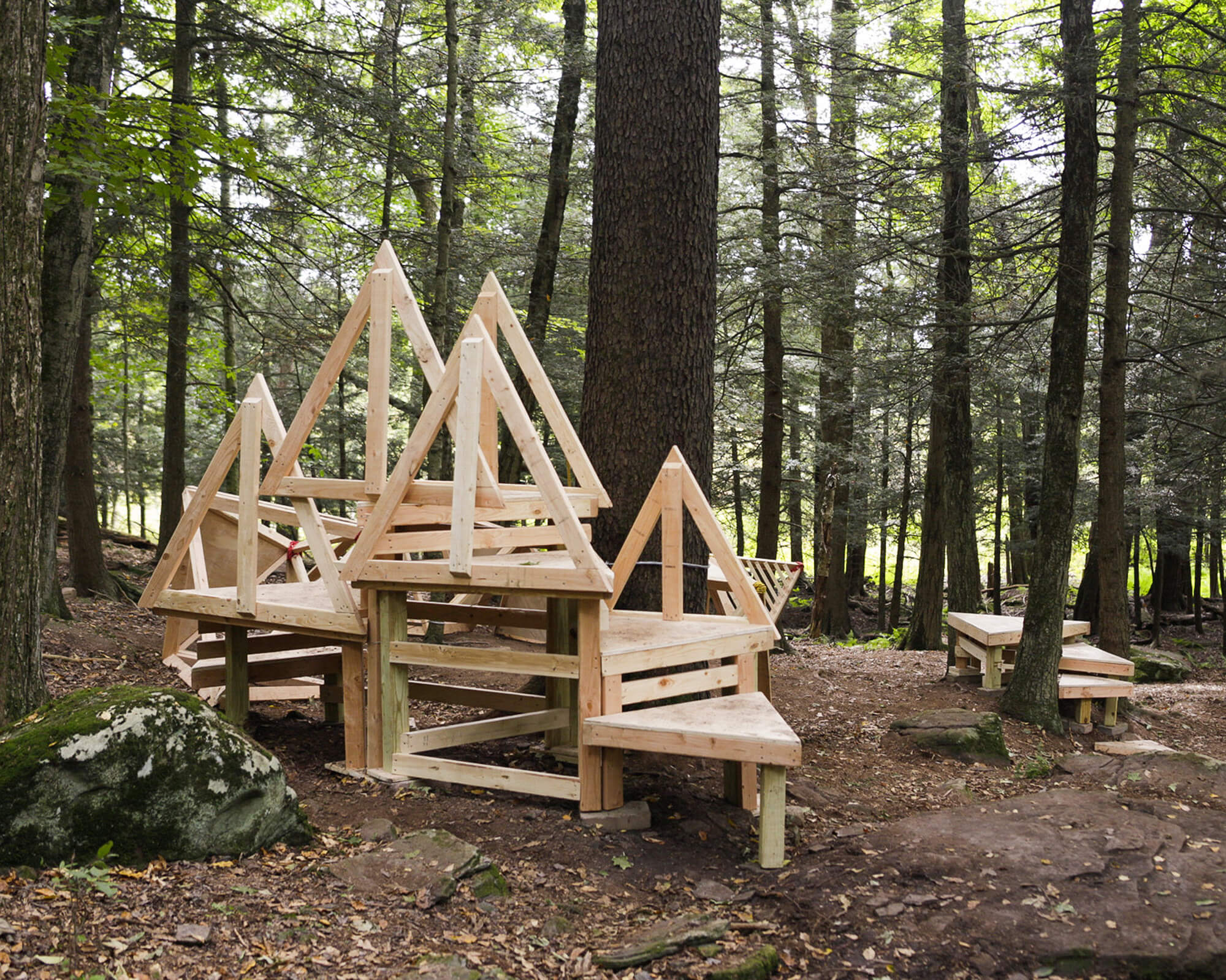
Syracuse University’s contribution is called Inside Out. Led by professor Joel Kerner, students Alexandra Gordan, Arpitha Cunigal, Tyler Bernier, and Alexandra Galis created a “room lost in the forest.” According to the designers, the project takes the form of a “dislocated” suburban home built from wood and natural elements. The occupiable structure was conceived as an “as-built ruin of modern life.”

Last but not least, Plantar was a collaboration between Rochester Institute of Technology and Fashion Institute of Technology. Professors Kate Johnson and Pansum Cheng worked with students Robert Deene, Huairen Zhang, Lobsang Tsewang to create a multi-media, site-specific installation consisting of hundreds of wooden posts elevated eighteen feet above the ground. The posts, which range between 24 and 32 inches in length, are stained in a dark brown lacquer to blend in with the environs while the underside visitors can experience are expressed in bright pink for contrast.

“At Bethel Woods, our history is rooted in not only amplifying musicians, but artists in all their forms,” Hitch added. “Seeing the program grow at such a rapid pace is both exciting and encouraging. At its core, the Art & Architecture Festival is about allowing the students to take a step away from the studio and celebrate art and creativity in an interactive and lasting way.”
The installations will be on display for the coming months.








